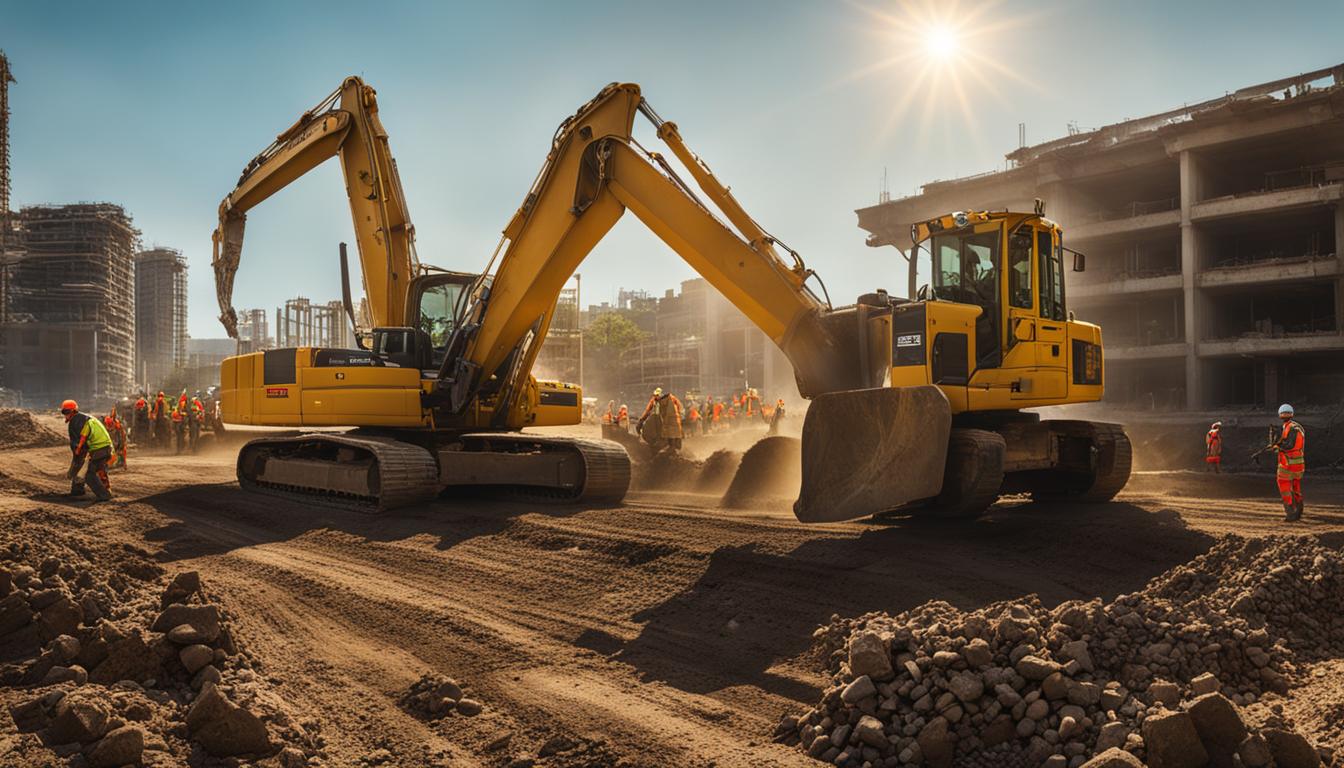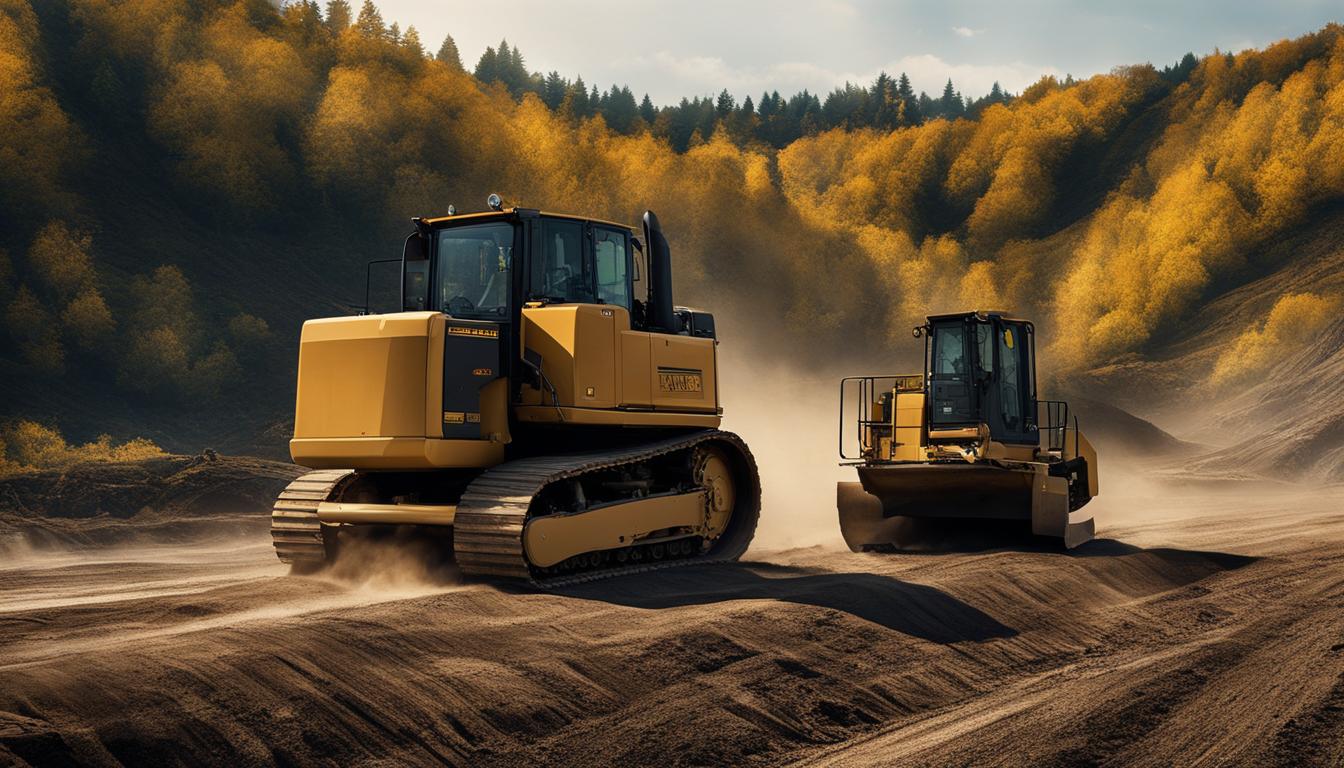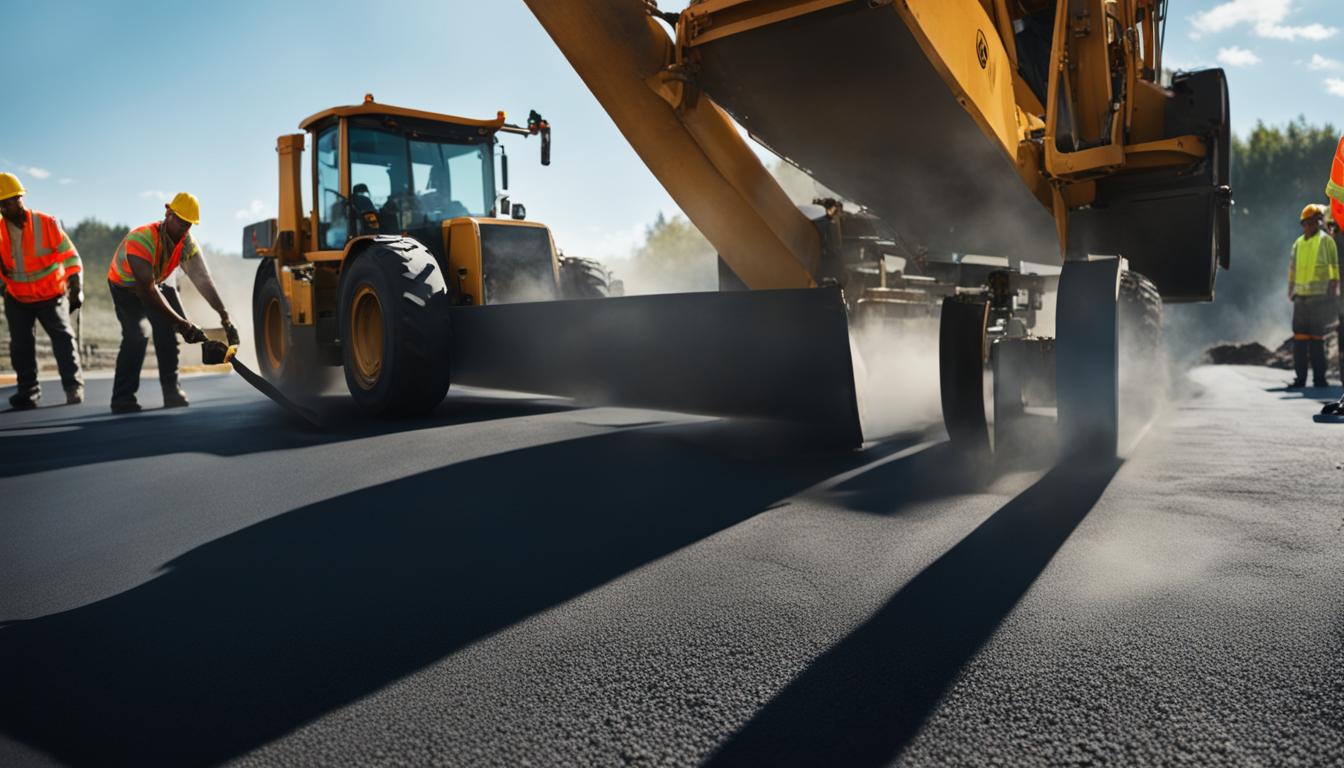How are Roads and Highways Built?
Road construction is a complex process. Involving careful planning, design, and execution, constructing a road encompasses various techniques, materials, and equipment. Combined, these elements make roads safe and durable. Understanding how roads are built is essential, for that’s the only way to truly appreciate the intricacies involved with constructing the infrastructure that supports transportation connecting communities and evolving economic growth.
The road-building process involves several professionals. Engineers and construction experts come together, working in tandem to follow a series of steps that start from creating the initial plan and designing and end with quality control measures.
Key Takeaways:
- Road construction requires careful planning, design, and execution.
- The process can take months or even years, based on how big and complex the project is.
- Various road construction materials and equipment are used to create safe and durable roadways.
- Quality control measures are implemented throughout the construction process.
- Environmental considerations play a crucial role in road construction
Planning and Design
The first step of road construction is the planning and design phase. It creates the foundation for the project, where engineers and construction experts carefully take into account multiple factors to build a road that meets the required specifications.
Determining these road construction specifications is crucial. It is a step that involves looking at factors such as
- Expected traffic volume
- Environmental impact
- Cost.
Technical considerations aside, the planning and design phase also involves the selection of road building contractors and public engagement.
The public is engaged through meetings where experts take their feedback and address their concerns. Through this collaborative approach, road design and construction that aligns with the needs of stakeholders is ensured.
After finalizing road construction specifications, the search for qualified contractors begins. These contractors are evaluated based on their expertise, experience, and pricing. Getting things right here is crucial, for the right contractor can make or break a road construction project.
Table: Road Construction Specifications
| Factor | Considerations |
| Expected Traffic Volume | Determining the capacity of the road based on projected traffic flow. |
| Environmental Impact: | Evaluating the potential impact of road construction on the surrounding environment and implementing appropriate mitigation measures. |
| Cost | Developing a budget that considers materials, labor, and equipment required for the construction. |
To breakdown the first phase:
With the planning and design phase, the foundation is set for the road construction project. This phase involves considering the road construction specifications, talking to the community, and selecting the right contractors. These elements make the project’s development flow seamlessly
Earthworks
After the planning and design phase, the construction phase begins. This phase involves earthworks. Here, heavy equipment, such as bulldozers and graders, are involved. They lay a solid foundation for the road.
Bulldozer and Construction Workers
Bulldozers are powerful machines equipped with large metal blades in the front that can clear vegetation, trees, rocks, and other obstacles from the construction site. They also play a critical role in moving, leveling, and shaping the earth, creating a smooth and even surface for the road. Specially trained construction workers take the reins of these machines, carrying out earthworks effectively.
Excavation and Grading
Excavation is key to earthworks. It involves the removal of soil and other materials to create space for the road’s foundation. The depth and extent of excavation depend on multiple factors, including the road design and the requirements of the project.
Once excavation is completed, grading begins. It is the process of leveling the ground to create a consistent slope and shape that will support the road. It involves cutting and filling, where excess soil from higher areas is added to lower areas to achieve the desired elevation and contours.
| Equipment | Function |
| Bulldozers | Clearing vegetation and obstacles, shaping the earth |
| Graders | Creating a smooth and even surface, leveling the ground |
| Excavators | Removing soil and materials, digging trenches |
Crushed Rock and Gravel
After initial earthworks are finished, crushed rock and gravel are added to create a stable base for the road. They give a solid foundation to the road, making it strong enough to withstand the weight of vehicles and protection from sinking or shifting.
The crushed rock and gravel are carefully put together in a compact fashion. That achieves maximum stability and durability. This step is crucial as it makes the road strong and ensures its longevity.
This step finishes earthworks and next comes paving.
Paving
Paving involves applying specific materials to make road surfaces smooth and durable. Two key materials are most common for paving: asphalt and concrete.
Asphalt Roads
Sand, crushed rock, and Bitumen are mixed together to make Asphalt roads. The final element – Bitumen – acts as a binder, holding the mixture together to form a strong and flexible road surface. While paving is ongoing, the asphalt mixture is heated to a precise temperature. It is then spread and compacted onto the prepared foundation. With compaction, proper density and smoothness of the road surface is ensured. That provides a safe and comfortable driving experience.
Concrete Roads
Concrete roads, on the other hand, are constructed by mixing sand, crushed rock, cement, and water. The liquid concrete is added to forms and left to cure and harden. Once the concrete has set, it has to be vibrated and trimmed to the correct height. In the end, we get a rigid and durable road surface that can withstand heavy traffic loads, and extreme weather conditions.
It doesn’t matter whether asphalt or concrete is used, for both road surfaces are designed to effectively drain water away from the road. This prevents water pooling on the surface, reducing the risk of accidents and extending a road’s lifespan.
| Advantages of Asphalt Roads | Advantages of Concrete Roads |
| Cost-effective | Durable and long-lasting |
| Smooth and comfortable driving experience | Low maintenance requirements |
| Flexible and can withstand temperature fluctuations | High load-bearing capacity |
To conclude, the paving stage of road construction plays a critical role in creating safe and reliable roadways. Whether it’s asphalt or concrete, the chosen road surface material has to be applied carefully to ensure a smooth and durable driving expereince.
By diving into the specific requirements of each road construction project, engineers can pick the most suitable paving material that will meet the needs of both drivers without harming the surrounding environment.
Quality Control
Quality control is a crucial aspect of any road construction project. It ensures that the road meets the specifications and standards, and guarantees its durability and safety.
As construction is going on, inspections are carried out, with the quality of materials and workmanship assessed at each step. As deficiencies are found during each step, they are fixed then and there to prevent future problems.
Quality control also focuses on the pavement. It involves testing to measure the strength, smoothness, and durability of the road surface. These tests identify any potential weaknesses that require improvements, such as unevenness or cracking. By addressing these issues during the construction process, the road can be built to withstand the expected traffic load and weather conditions.
“Quality control ensures that the road meets the required specifications and standards, guaranteeing its durability and safety.”
| Quality Control Measures | Testing Procedures |
| Inspections at various stages | Visual assessment, measurements |
| Foundation testing | Compaction tests, density tests |
| Pavement testing | Strength tests, smoothness tests, durability tests |
By implementing rigorous quality control measures, road construction projects can ensure that the roads they build are of the highest standard. This benefits the communities that rely on these roads for transportation and helps to minimize the need for costly repairs and maintenance in the future.
Environmental Considerations
Environmental concerns shouldn’t be forgotten when building roads. With installed drainage systems, water doesn’t pool on the road surface, ensuring safe and efficient transportation. It also helps prevent accidents caused by hydroplaning and reduces the risk of road damage due to water accumulation.
Vegetation has to be cleared to make way for the new road sometimes, but that doesn’t mean it has to be done haphazardly. Clearing is done selectively when possible to preserve trees and plants that are essential for the ecosystem. Replanting and restoration initiatives are undertaken in some cases to compensate for the loss of vegetation.
“Preserving and protecting the natural environment is a key consideration in road construction projects. By implementing sustainable practices and using eco-friendly building materials, impact on the environmental can be minimized, and the life of the roadways can be lengthened.”
Eco-friendly building materials are another important consideration. Sustainable alternatives to conventional materials reduce the carbon footprint of construction projects. These materials include recycled asphalt, reclaimed concrete, and permeable paving systems that allow water to infiltrate the ground, reducing the strain on drainage networks and protecting natural water sources.
Benefits of Environmental Considerations in Road Construction
- Minimizes the impact on local ecosystems
- Improves water management and reduces the risk of flooding
- Reduces carbon emissions and promotes sustainability
- Enhances the overall aesthetic appeal of the road
Conclusion
Building roads and highways is a complex process that requires meticulous planning, design, and construction. From the initial phase of planning and design to the final stage of quality control, every step has to be taken with care to ensure the creation of safe and durable roadways.
The construction process the utilization of various materials and equipment to achieve the desired results. Whether it’s the use of asphalt or concrete for road surfaces or the incorporation of sustainable building materials, the goal is to create roadways that can withstand the test of time and support the needs of the community.
Road construction projects can span months or even years, depending on the size and complexity of the project. However, one cannot measure the positive impact they can have on transportation, economic development, and the overall quality of life for communities. With the arrival of new roads and highways people and places connect, giving them a way to progress and grow.
Frequently Asked Questions
How long does road construction typically take?
The duration of road construction projects can vary depending on the size and complexity of the project. It can take anywhere from months to years to complete.
What materials are commonly used in road construction?
Asphalt and concrete are the most common road surfaces. Crushed rock and gravel are used to create a stable foundation.
What equipment is used in road construction?
Bulldozers, graders, and paving machines are the heavy machines used for road construction. These machines are used for tasks such as excavation, grading, and asphalt or concrete paving.
How is the road surface created?
Asphalt roads are made by combining sand, crushed rock, and bitumen. This mixture is heated, spread, and compacted onto the road foundation. Concrete roads use a mixture of sand, crushed rock, and cement. Liquid concrete is poured into forms and then vibrated and trimmed to the correct height.
What quality control measures are taken during road construction?
Inspections are carried out at various stages of the construction process to ensure the road meets the required specifications. Quality control involves checking the quality of materials and workmanship, as well as testing the pavement for strength, smoothness, and durability.
What environmental considerations are taken into account during road construction?
Drainage systems are installed to prevent water from pooling on the road surface. Efforts are made to minimize the impact on the surrounding environment by clearing vegetation and using sustainable building materials whenever possible.
Why is road construction important?
Road construction plays a vital role in facilitating transportation, supporting economic development, and improving the quality of life for communities. It allows for safer and more efficient travel for individuals and enables the transportation of goods and services.






